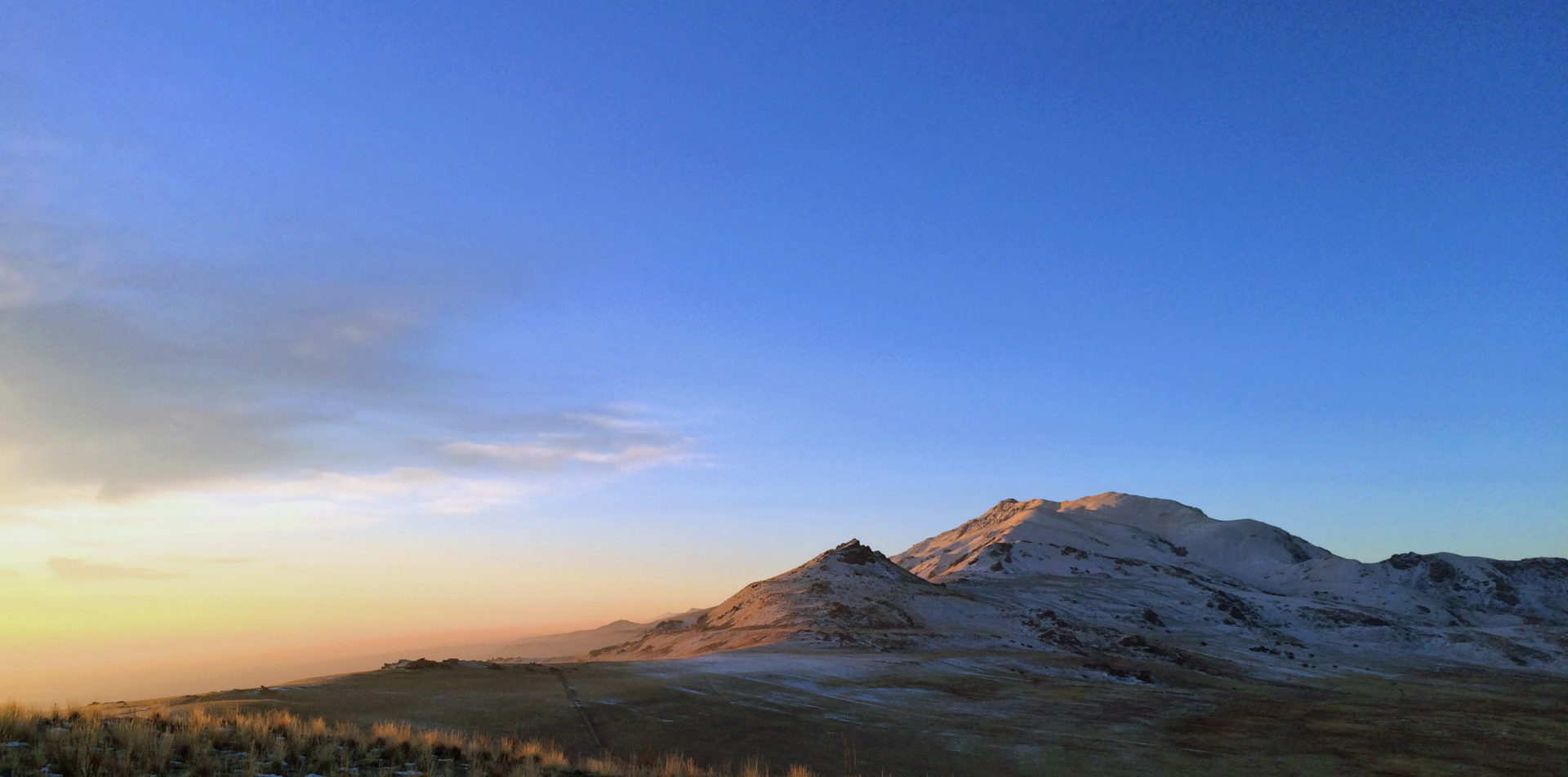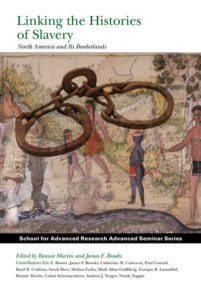Linking the Histories of Slavery: North America and Its Borderlands
Edited by Bonnie Martin and James F. Brooks
(cross-posted at the Borderlands History Blog)
Students and scholars of the North American Borderlands of a certain vintage will surely have read James F. Brooks’ Captives and Cousins. In that seminal work Brooks used the framework of slavery, raiding, and kinship to discern order in the seeming chaos of the colonial Spanish-American borderlands. This topic of slavery is enjoying renewed (and much deserved) interest and again serves as a useful framework to understand the region’s history. Unfree labor – in all of its forms – rise as an essential, but oft overlooked, component in what drove borderlands histories. At times, it held the region together, at times it drove it apart. If the present anthology signals a new wave of monograph-length studies, the field is prepped for growth. The popularity of Andrés Reséndez’s new (hemispheric) The Other Slavery: The Untold Story of Indian Enslavement in America also signals that readers are ready to grapple with this important subject.
The anthology grew out workshops jointly hosted by the Clements Center for Southwest Studies at Southern Methodist University, and the School for Advanced Research in Santa Fe. Those institutions deserve praise for the expenditure of considerable funds and energies to conceptualize, execute such programming and to publish its results. In the throws of undertaking a similar workshop/anthology myself for the BYU Charles Redd Center for Western Studies, I know it is no small undertaking. The potential payout, however, is immense. In this case, their hard work definitely paid off!
The volume is divided into 3 parts.
- Part I, “Links to Early Slavery” includes two essay that link familiar contexts of African slavery in the east with indigenous forms of slavery and some of their integration with commercial slave worlds in the east.
- Part II, “Links to Expanding Slave Networks,” moves beyond the initial interfacing of indigenous and Euro-American slaving practices/networks/commerce, to investigate extensive connections between these worlds. 6 chapters range from California to the American South, and along the southern borderlands from the southwest to Texas to Cuba – three struck me in the following ways.
- Paul Conrad’s work explore “An Apache Diaspora to Cuba” may prove the most astounding – demonstrating how the breadth of Spanish colonial enterprises could result in captives being traded off the American mainland. The potential integrating of southwest borderlands and Atlantic world slave networks is intriguing. Considering Cuba, I immediately turned to Jace Weaver’s The Red Atlantic: American Indigenes and the Making of the Modern World, 1000-1927, to see how much slavery was considered there – a bit, not enough. Likewise, I love how Conrad unmoors us from the mainland. I felt similar excitement at being pulled into indigenous maritime experiences by Joshua Reid’s The Sea is My Country and Andrew Lipman’s The Saltwater Frontier. Conrad does not dwell much upon the extra-continental aspect or intrigue of his story, but being jarred from the familiar Apacheria where my previous readings of Apaches and slaving in the SW caused pause and encouraged me to set aside the assumptions of that familiar world. Perhaps, there was a historical experience here I truly knew nothing about (as did Reid and Lipman’s work). This is at the foundation of why Borderlands history proves so endlessly fascinating – it constantly confronts us with unfamiliar historical worlds and contexts.
- Boyd Cothran’s work on the Upper Klamath region treats us to a glimpse at the inner working of indigenous economic, political, and diplomatic worlds. Klamaths adapted existing slave traditions to new opportunities afforded by Gold Rush developments. There is nuance here too often lacking when we consider indigenous actors – deliberate economic decision-making and political acumen. Cothran is currently working on a wonderful new project, and his Remembering the Modoc War was wonderful, but I do wish he would take this chapter and expand it into a full monograph.
- Natale Zappia explores economic networks within the inland SW – trade and slave networks expand from inland California into Arizona, Utah, and New Mexico, with Indians both slaving and being slaved. This aligns with Zappia’s Traders and Raiders – a much needed contribution. Those inland California, SW, and Great Basin indigenous worlds – the Colorado Basin – are in need of more work, one of many geographic backwaters that too few people investigate.
- Part III, “Links to Legacies of Slavery” warrants a full anthology in and of itself. The three chapters explore cultural memory of slavery in New Mexico, Twentieth Century Relocation, and Twenty-First Century sex slavery. The latter two were particularly hard hitting
- Sarah Deer links the trauma of dislocation via boarding school and relocation programs to increased risk and occurrence of sex trafficking and exploitation of Native women. I was pleased to find that this work was included in a broader collections of essays she published in 2015, The Beginning and End of Rape: Confronting Sexual Violence in Native America. Building further, Melissa Farley explores the fraught circumstances of contemporary sexual exploitation and prostitution (legal and illegal). These two final essays deliver such a gut-punch, reminding us that the evils and horrors of history are still very much alive today. Too few of our investigations into the past succeed in drawing attention to the oft-dire present
Much of this volume unfolds in traditional southern “borderlands” worlds, but there is some variance in geography and themes that link the borderlands to other context. I would like to see more of this. The preponderance of southern focus perpetuates familiar narratives while other possible locations for the study of unfree indigenous labor are passed over. Cothran and Zappia’s California treatments introduce some new regions. However, what of the northern borderlands or more interior borderlands? What of the Great Plains, Pacific Northwest, Canada? Benjamin Madley recently published an article in the Pacific Historical Review that conceptualizes slavery in more nuanced terms – “unfree” labor. (See Benjamin Madley, “Unholy Traffic in Human Blood and Souls”Systems of California Indian Servitude under U.S. Rule.” Pacific Historical Review 83 (November 2014): 626-667). There is a rich field to be plowed here – the various forms of “slavery” or “unfree” labor in indigenous North America (too little Canada in a book on “North America”!). Perhaps with this and other new work, historians of the North American West and indigenous peoples will pause to consider how systems of unfree labor may actually be a part of stories they are telling, but hadn’t thought to consider them.
Much thanks to James Brooks for mailing me a copy of this book to review and to the hard work of its contributors. Borderlands, West, indigenous, and other scholars should all take note of this anthology and start googling around for concurrent or upcoming work by its authors.

